1. Daniel H. Pink: "When: The Scientific Secrets of Perfect Timing" | Talks at Google
2. The Importance of Breaks and Naps
2.1. When timed well, breaks expand our cognitive abilities and improve our mood
2.2. Even 5 minute breaks during work have been shown to...
2.2.1. Reduce fatigue
2.2.2. Boost motivation
2.2.3. Improve creativity
2.3. What to do during breaks
2.3.1. No email checking, no texting!
2.3.2. Socializing
2.3.2.1. Reduces stress
2.3.3. Spending time outside
2.3.3.1. Improves mental and emotional state
2.3.4. Napping
2.3.4.1. BUT: don't nap longer than 20 minutes, otherwise you'll suffer from sleep inertia (feeling groggy)
2.3.4.2. Ideally, have a 'napuccino'
2.3.4.2.1. = Cup of coffee before a 10-20 min nap
2.3.4.2.2. Caffeine takes 20 min to enter the bloodstream, so it'll kick in right when your nap is over!
3. Timing in Project Management
3.1. The Power of the Midpoint
3.1.1. People usually focus on the beginning and the end of a project, but the middle is extremely important, too.
3.1.2. The 'Uh-Oh Effect'
3.1.2.1. Teams often do hardly anything at the beginning of a project, and then at the exact midpoint, they go 'uh-oh, we really need to get to work' - that's when they finally get busy
3.1.3. The midpoint is the perfect time to give your team a spark of motivation and productivity
3.2. We tend to give too much meaning to endings
3.2.1. That's why people sometimes display extreme behaviors near the end of a project
3.2.2. Beware of extreme or rash behavior as the finish line draws near!
4. About the Book
4.1. Title
4.1.1. When
4.1.2. The Scientific Secrets of Perfect Timing
4.2. Published
4.2.1. January 2018
4.2.2. Riverhead Books
4.3. Author
4.3.1. Daniel H. Pink
4.3.1.1. Author of six provocative books, e.g.
4.3.1.1.1. A Whole New Mind
4.3.1.1.2. Drive
4.3.1.1.3. To Sell Is Human
4.3.1.2. His books have won multiple awards and have been translated into 37 languages
4.3.1.3. He lives in Washington, DC, with his family
4.3.2. Website
4.3.3. @DanielPink
4.4. Get it on Amazon
5. The Emotional Pattern of Our Daily Lives
5.1. We experience an emotional cycle every day
5.2. We feel positive/happy in the morning; the feeling drops in the afternoon, then climbs back up in the evening
5.2.1. "Morning Peak"
5.2.2. "Afternoon Trough"
5.2.3. "Evening Rebound"
6. Chronotypes
6.1. To make the most of your day, it's important to know which chronotype you are
6.1.1. Normal chronotype
6.1.1.1. 60-80% of people
6.1.2. Night owl
6.1.2.1. 20-25% of people
6.1.2.2. Peak around 9 pm
6.1.2.3. Positive rebound in the morning
6.1.2.4. Often more creative, neurotic, impulsive and depressive
6.1.3. Lark
6.1.3.1. = Early riser
6.1.3.2. Experience the peak, trough and rebound a few hours earlier than others
6.1.3.3. Often more stable, happy, introverted than others
6.2. Examples for efficient scheduling
6.2.1. Normal chronotype
6.2.1.1. Morning peak = best time to handle analytical tasks
6.2.1.2. Rebound = best time for abstract or 'out of the box' thinking
6.2.2. Night owl
6.2.2.1. Night time = best time to think analytically
6.2.2.2. Morning = best for creative thinking
6.2.3. Mindless, busy-work tasks are always best scheduled for the trough
6.3. NOTE: We move through the different chronotypes as we age
6.3.1. Children and old people tend to be larks
6.3.2. Teenagers are usually night owls
